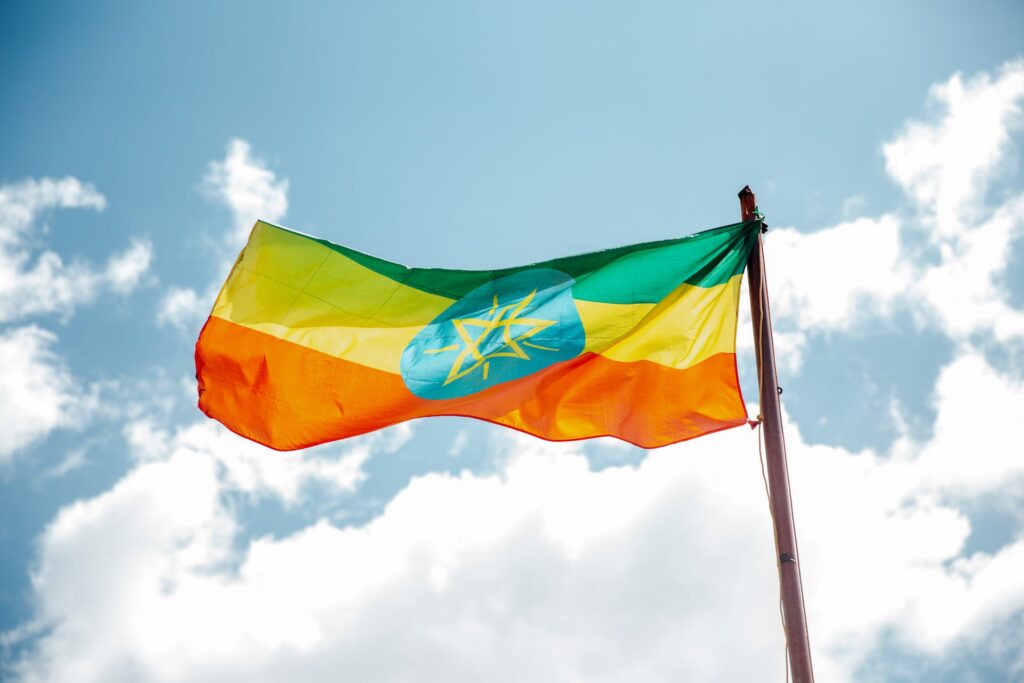Addis Ababa, which means "new flower" in Amharic, is the capital and largest city of Ethiopia. It is a bustling metropolis located in the central part of the country, at an elevation of 2,355 meters (7,726 feet) above sea level.
Founded in 1886 by Emperor Menelik II, Addis Ababa is a melting pot of cultures, languages, and traditions. The city is a vibrant mix of old and new, with modern high-rise buildings blending seamlessly with traditional Ethiopian architecture.
One of the highlights of Addis Ababa is the bustling Mercato, one of the largest open-air markets in Africa. Here, visitors can experience the sights, sounds, and smells of traditional Ethiopian life, as they browse through a myriad of stalls selling everything from spices and textiles to crafts and souvenirs.
Addis Ababa is also home to a number of important cultural and historical attractions, such as the National Museum of Ethiopia, where visitors can see the famous fossilized remains of "Lucy," a 3.2 million-year-old hominid, as well as a diverse collection of Ethiopian artifacts and artworks.
For those interested in the country's rich history, the Ethnological Museum and the Holy Trinity Cathedral are must-visit destinations. The cathedral is the final resting place of Emperor Haile Selassie and is known for its beautiful stained glass windows and ornate carvings.
Food lovers will also delight in Addis Ababa's culinary scene, with an abundance of traditional Ethiopian restaurants serving up delicious dishes such as injera (a spongy flatbread) and doro wat (spicy chicken stew).
Overall, Addis Ababa is a city that offers a unique blend of history, culture, and modernity, making it a must-visit destination for anyone looking to experience the vibrant spirit of Ethiopia.
What to explore:
1. National Museum of Ethiopia: This museum contains a fascinating collection of artifacts and exhibits, including the famous Lucy skeleton.
2. Holy Trinity Cathedral: This beautiful cathedral is a prominent landmark in Addis Ababa and is the final resting place of Emperor Haile Selassie and his wife.
3. Addis Mercato: This bustling market is one of the largest in Africa and offers a wide variety of goods, from traditional crafts to fresh produce.
4. Red Terror Martyrs Memorial Museum: This museum commemorates the victims of the Red Terror, a period of political repression in Ethiopia in the 1970s.
5. Entoto Hill: This scenic hill offers panoramic views of Addis Ababa and is home to the former palace of Emperor Menelik II.
6. Ethnological Museum: Located on the campus of Addis Ababa University, this museum showcases the diverse cultures and traditions of Ethiopia.
7. Meskel Square: This bustling square is a popular gathering place for locals and hosts events such as concerts, parades, and cultural celebrations.
8. St. George's Cathedral: This striking cathedral is known for its unique architecture and beautiful stained glass windows.
9. Unity Park: This newly opened park is located on the former palace grounds of Emperor Menelik II and features beautifully landscaped gardens and historical monuments.
10. Yekatit 12 Martyrs Square: This square commemorates the victims of the Addis Ababa massacre that took place on February 19, 1937.
